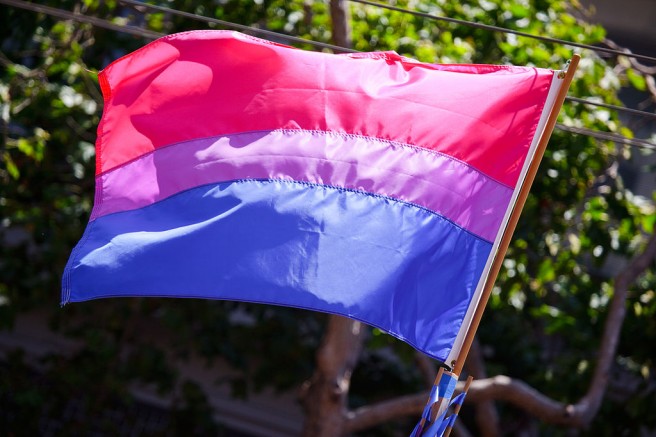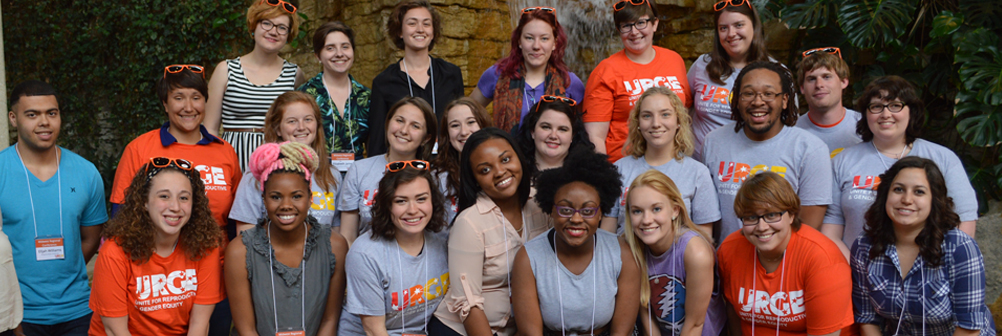Bisexuality and Queer Policing

Posted by Nigel Morton
September 22, 2015

This Saturday kicked off my town’s week long pride festival. It was a small outdoor concert and variety show at our town’s Native American center. It was full of great organizational tables, good local food, and good music. The MC was a black trans woman who was fabulous; the whole event was pretty fabulous. Overall, it was a super inclusive community event that even included a couple of drag kings. There was one point with a call and answer part where they would call out an orientation or gender and that respective group would cheer back. It was a great way to pep up the crowd, and it worked. Unfortunately one group was left out. No, not straight allies. They were recognized, too. Bisexual men and women didn’t even get a mention let alone a cheer. Coincidentally, the next day was the start Bisexual Awareness Week.
This is unfortunately a common occurrence in the Queer Community. This phenomenon has colloquially been dubbed monosexual normativity. Let’s start by discussing heteronormativity.
There was a boy and a girl. You know where I’m going with this, right? They fell in love and lived happily ever after. Action packed movie with explosions, violence, and little bit of romance (attractive woman to serve as a trophy for the male hero). The normal nuclear family: Mom, dad, 2.5 kids, and a dog. A heterosexual romantic movie rated PG-13 versus a gay or lesbian romance being rated R. Examples of heteronormativity is everywhere. Oxford Dictionaries defines heteronormative as “… a world view that promotes heterosexuality as the normal or preferred sexual orientation.” This practice can be invalidating and sometimes extremely harmful for gay and lesbian youth looking for representation and validation.
Luckily our culture is shifting to be more accepting of having same-sex relationships in our media, and there is even a slight increase in the acceptance of the transgender community. The problem that has always been prevalent in the Queer Community and elsewhere is acceptance of the bisexual community. With heteronormativity beginning to show signs of breaking down, monosexual normativity is starting to prevail even more.
Monosexual normativity is the same as heteronormativity in practice, but instead it is thought normal or preferred that a person is only attracted to one gender. If they show signs otherwise, then they’re just confused or going through a phase. This happens in queer and mainstream media. I tried to start watching The L Word but stopped after I got tired of hearing the phrase “she’s one of those dirty bisexuals.”
Ultimately, monosexual normativity and bisexual erasure is a result of the need in the queer community to prove your queerness. Bisexuals are often declared not queer enough because they’re half straight, which is horribly inaccurate. A good basic explanation of bisexuality is the color purple. Purple is not half red and half blue; it is just purple. Purple can also be different shades which is an excellent metaphor for having more attraction to one gender. There is also the harmful idea that bisexuality is just a layover on the flight to ‘gaydom.’ While it is true that some people do use the label bisexual while they’re still figuring it all out, most bisexuals are not going through a phase. This invalidation also leads to serious implications. A recent study reported bisexual women are the most likely to face illness, mental and physical, and not seek help. If one is so used to hiding and denying a key part of their identity, what stops them from denying that they need any treatment for their ailments?
Because there is little to no accurate representation or recognition of the sexuality, to be bisexual and certain about it takes self-confidence and the self-reinforced idea that you are valid that many ordinary people would not be able to muster. Monosexual normativity invalidates bisexuals in a community that is supposed to foster acceptance and validation.
In place of the forgotten shout out at my town’s pride event, to all the bisexual men, women, and transgender people out there: you are not alone, you are queer enough, and you are valid.
Image by By Peter Salanki via Wikimedia Commons
Leave a Reply
You must be logged in to post a comment.

